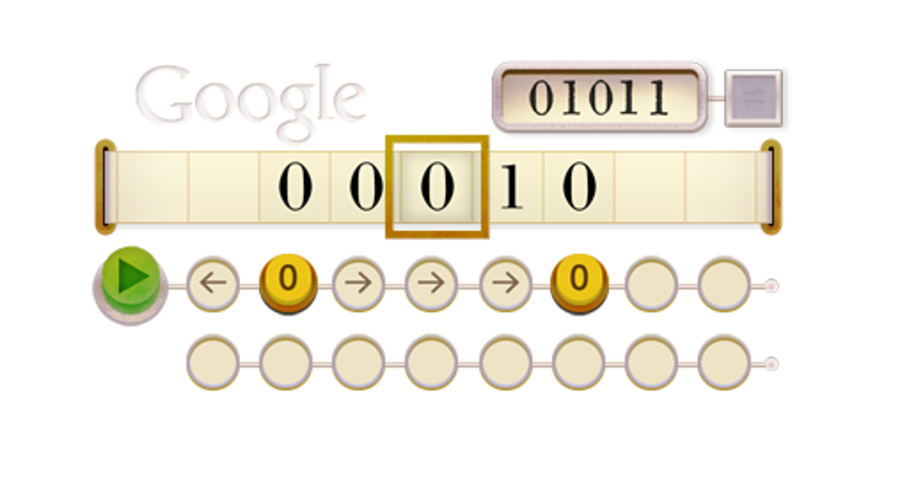Most people know that code breaking exists to some extent, but on June 23, 2012, Google users were able to give it a shot themselves. In honor of Alan Turing’s 100th birthday, Google created a Turing Machine in place of its logo.
Alan Turing was a technological genius during World War II who helped crack the German military’s code, allowing the Allies to intercept enemy messages and bring the fighting to an end. He went on to essentially invent computer science, predicting that one day we would not be able to tell a robot from a human. With his vision has nearly coming true, Google created a Doodle in his honor. The Turing Machine is a way to theoretically compute a number, so Googlers use binary code to get their ones and zeroes to match the numbers in a box in the upper-right corner. Each code colors in another letter of the Google logo. Still need a bit of help? Check out this cheat sheet to get you started.






